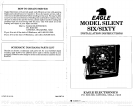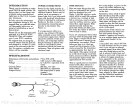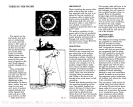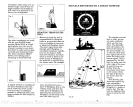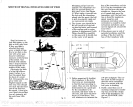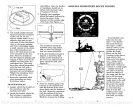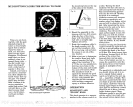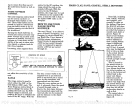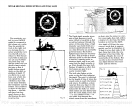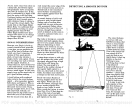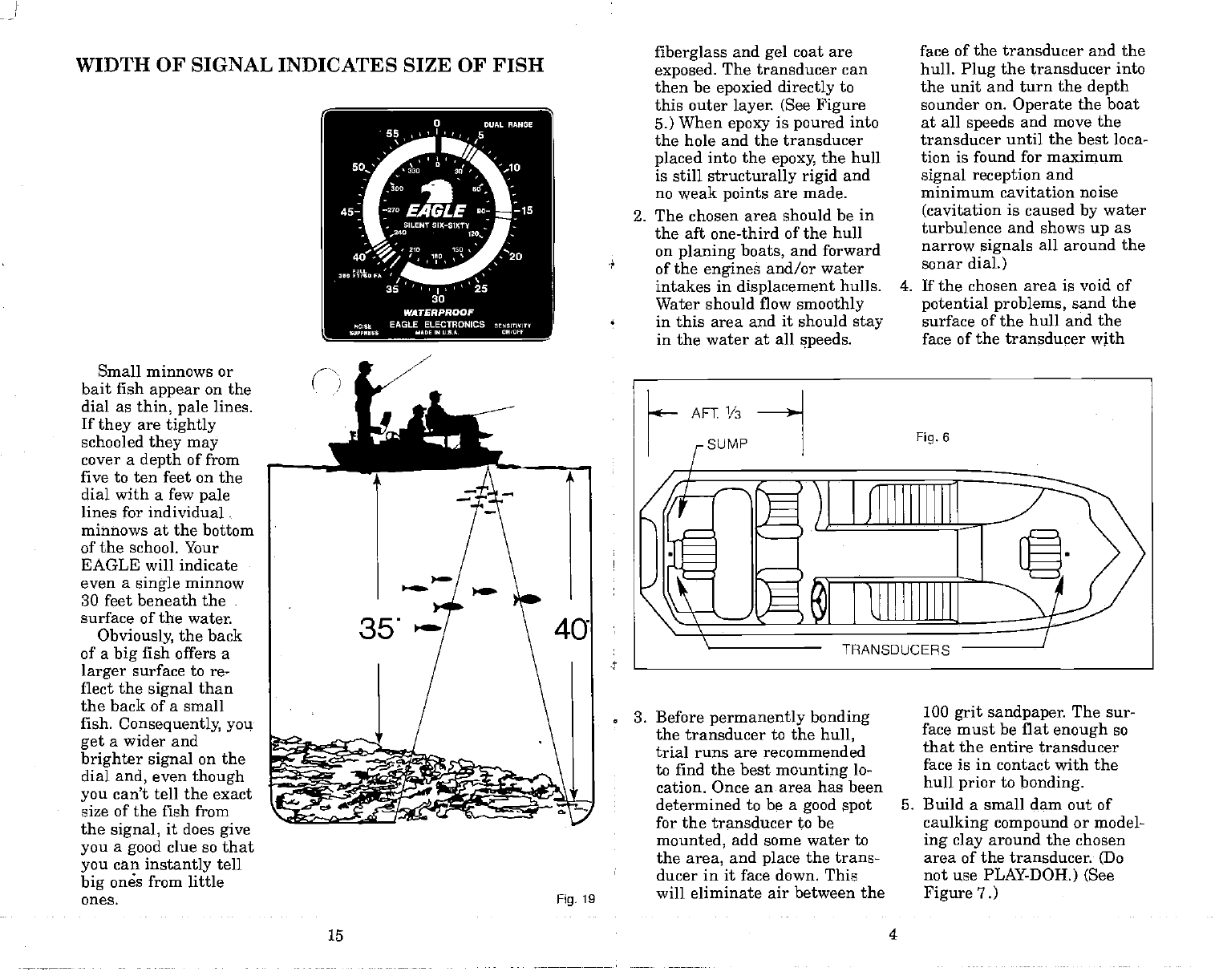
Small minnows or
bait fish
appear
on the
dial as
thin,
pale
lines.
If
they
are
tightly
schooled
they may
cover a
depth
of from
five to ten feet on the
dial with a few
pale
lines for individual.
minnows at the bottom
of the school. Your
EAGLE
will
indicate
even a
single
minnow
30
feet beneath
the
surface of the water.
Obviously,
the back
of a
big
fish offers a
larger
surface to re-
flect the
signal
than
the back of a small
fish.
Consequently, yop
get
a wider and
brighter signal
on the
dial
and,
even
though
you
can't tell the exact
size of the fish from
the
signal,
it does
give
you
a
good
clue so that
you
can
instantly
tell
big
ones from little
ones.
fiberglass
and
gel
coat
are
exposed.
The transducer can
then be
epoxied
directly
to
this outer
layer.
(See
Figure
5.)
When
epoxy
is
poured
into
the hole and the transducer
placed
into the
epoxy,
the hull
is still
structurally rigid
and
no weak
points
are made.
2. The chosen area should be in
the aft one-third of the hull
on
planing
boats,
and forward
of the
engines
and/or water
intakes in
displacement
hulls.
Water should flow
smoothly
in this area and it should
stay
in the water at all
speeds.
3. Before
permanently bonding
the transducer to the
hull,
trial runs are recommended
to find the best
mounting
lo-
cation. Once an area has been
determined to be a
good spot
for the transducer to be
mounted,
add some water to
the
area,
and
place
the trans-
ducer in it face down. This
will eliminate air between
the
face of the transducer and the
hull.
Plug
the
transducer
into
the unit and turn the
depth
sounder
on.
Operate
the boat
at
all
speeds
and move the
transducer until the best loca-
tion is
found for maximum
signal
reception
and
minimum cavitation noise
(cavitation
is caused
by
water
turbulence and shows
up
as
narrow
signals
all around the
sonar dial.)
4. If the chosen area
is
void of
potential
problems,
sand the
surface
of the hull and the
face of the transducer with
100
grit sandpaper.
The sur-
face must be flat
enough
so
that the entire transducer
face is in contact with the
hull
prior
to
bonding.
5.
Build
a small dam out of
caulking compound
or model-
ing clay
around the chosen
area of
the
transducer. (Do
not use PLAY-DOll) (See
Figure
7.)
15
4
WIDTH OF SIGNAL INDICATES SIZE OF FISH
4
Fig.
19
PDF compression, OCR, web-optimization with CVISION's PdfCompressor



